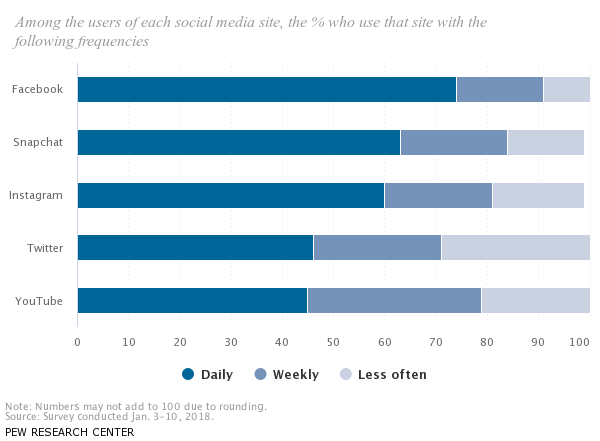
How to Run a Successful Optometry Practice
Written by: Nitin Rai, CEO with first insight on July 10, 2019–
Running a successful optometry practice requires a keen eye for identifying practice management opportunities while finding innovative ways to increase patient satisfaction. The definition of success for any business is revenue growth. To grow your optometry practice, your patients need to be happy and your staff needs to be productive.
Facilitating ongoing communication between patients and doctors via apps and online portals improves engagement rates by 60% or higher, reports research conducted by the Healthcare Information and Management Systems Society (HIMSS),
However, roughly 50% of the average worker’s time ends up being unproductive, due to poor processes and systems. Optometry staff members simply don’t have the tools they need to succeed in their roles.
Luckily, there are a few things you can do to turn the tide and focus on improving both efficiency and patient satisfaction. The result? Success…for your staff and your patients.
How Can I Grow My Optometry Practice?
Growing your optometry practice involves three key steps that likely won’t surprise you. Since you are caring for patients, your practice is no different than any other service-based business. The same strategies a service business uses to grow can be used by your practice too.
1. Providing Quality, Reliable Customer Service
High importance on human interaction was a key takeaway from PwC’s Future of Customer Experience Survey. 82% of US consumers want more human interaction in the future.
Patients are the backbone of the eye care industry, so centering your success around their happiness makes sense. Strive to provide the highest-quality customer service by emphasizing personalization through every patient communication touch point. Encourage existing patients to leave online reviews to show that your practice is a credible choice for future patients.
2. Mining Your EHR Data
Another proven way to grow your optometry practice involves EHR data mining. You need to understand how to manage your company data effectively and efficiently. Data mining involves finding useful correlations, patterns, and relationships in large amounts of data then using that knowledge to improve processes and procedures.
Data mining is helpful for gathering business analytics, keeping track of annual appointments, sending targeted communications to patients, and finding billing codes.
For example, leverage data mining to search for procedure codes over time or by providers within the practice, and to pull relevant data on procedures providers have performed. Or, with powerful find and search tools, quickly locate annual appointments to fit your search criteria for marketing campaigns.
3. Marketing Your Practice
Running a successful eye care practice also requires a marketing mindset. So, start seeing your optometry practice as its own brand. To increase brand awareness, create and promote quality content consistently across communication channels (social media, email, etc.).
The Pew Research Center reports that seven-in-ten people use social media for entertainment, to connect with one another, catch up on the latest news, and share information. Nearly 75% of Facebook users and 60% of Instagram users visit these sites daily.
Graphic Source: PEW Research Center, Social Media Fact Sheet
The best tools for marketing your optometry practice include Instagram, Facebook, LinkedIn, Twitter, WordPress or Squarespace, Grammarly or Writer, and Canva, among others. This article on improving marketing visibility will help you decide which solutions will grow your eye care practice and engage your patients.
Running a Successful Optical Practice That’s Patient-Focused
Naturally, patient care should be at the top of your priority list. The better you treat your patients, the more likely it is that they will become long-term patients you retain for years to come. Consistent revenue growth depends on how you excel with patient care.
1. Enhance the Patient Experience with EHR Patient Portals
EHR patient portals are a valuable engagement measurement tool and this technology makes processes easier for your staff and your patients. Scheduling is seamless, online bill pay is more convenient, and communication between you and the patient is consistent and secure. Patient portals also help you cut down on errors, increasing efficiency throughout your practice.
2. Train Staff to Manage Difficult Patients
Like any service-based business, patients sometimes have difficult demands that overwhelm your staff. Help your staff learn how to manage difficult situations and patients by developing a set of guidelines for dealing with commonly faced situations. Your guidelines should include tips for:
- Remaining calm
- Being empathetic towards the patient
- Setting boundaries
- Avoiding an argument at all costs
3. Improve Your Eye Care Staff Performance
Getting all of your staff on the same page is essential. If you want to inspire better performance in your eye care staff, consider asking for their input. This way you will understand potential inefficiencies and make the operational hierarchy understandable. Once you get a feel for their goals and challenges, you’ll learn how to support them and make them feel more appreciated.
4. Conduct Patient Satisfaction Surveys
While you’re asking for staff input, why not ask your patients for feedback too? The best way to improve your practice is by knowing what to improve. When you conduct patient satisfaction surveys, you’re opening the door to unbeatable insights straight from the source.
If you conduct surveys, make sure you put this data to good use. Once you have these insights, prioritize initiatives so you address top concerns.


